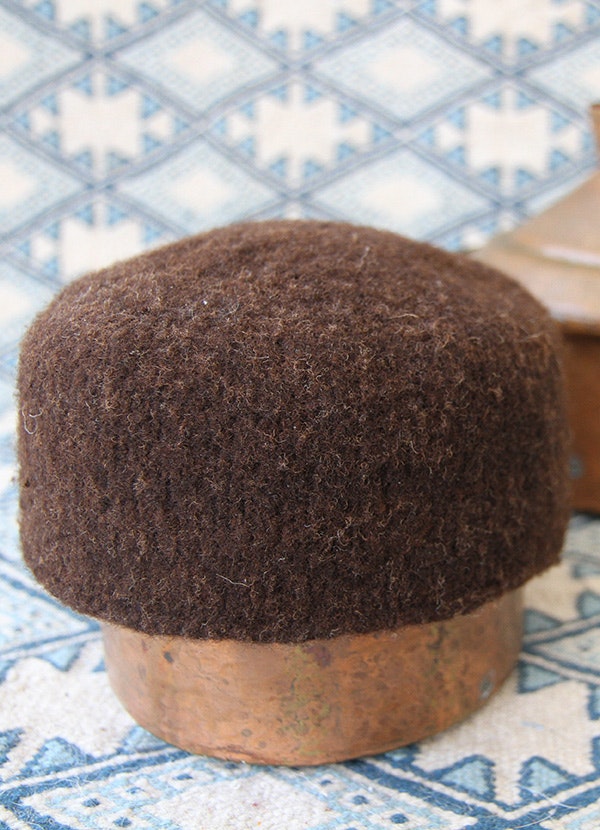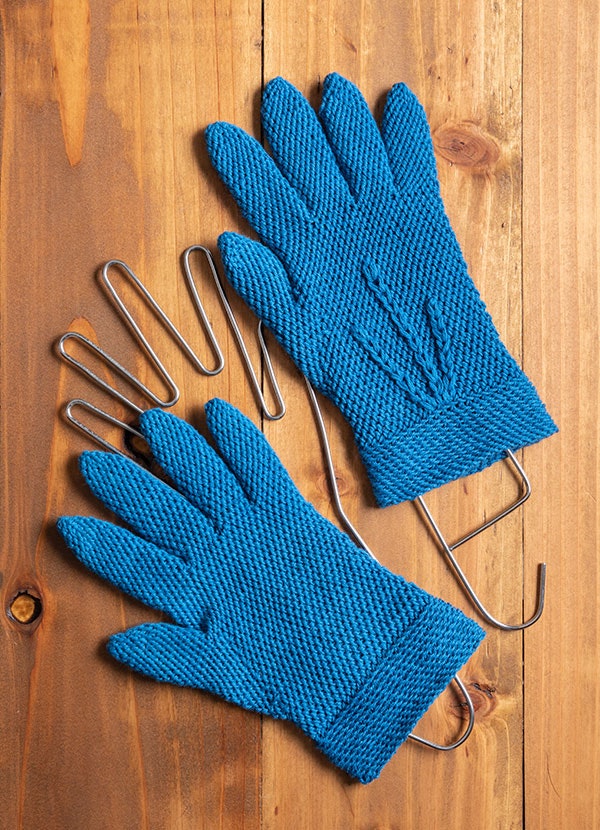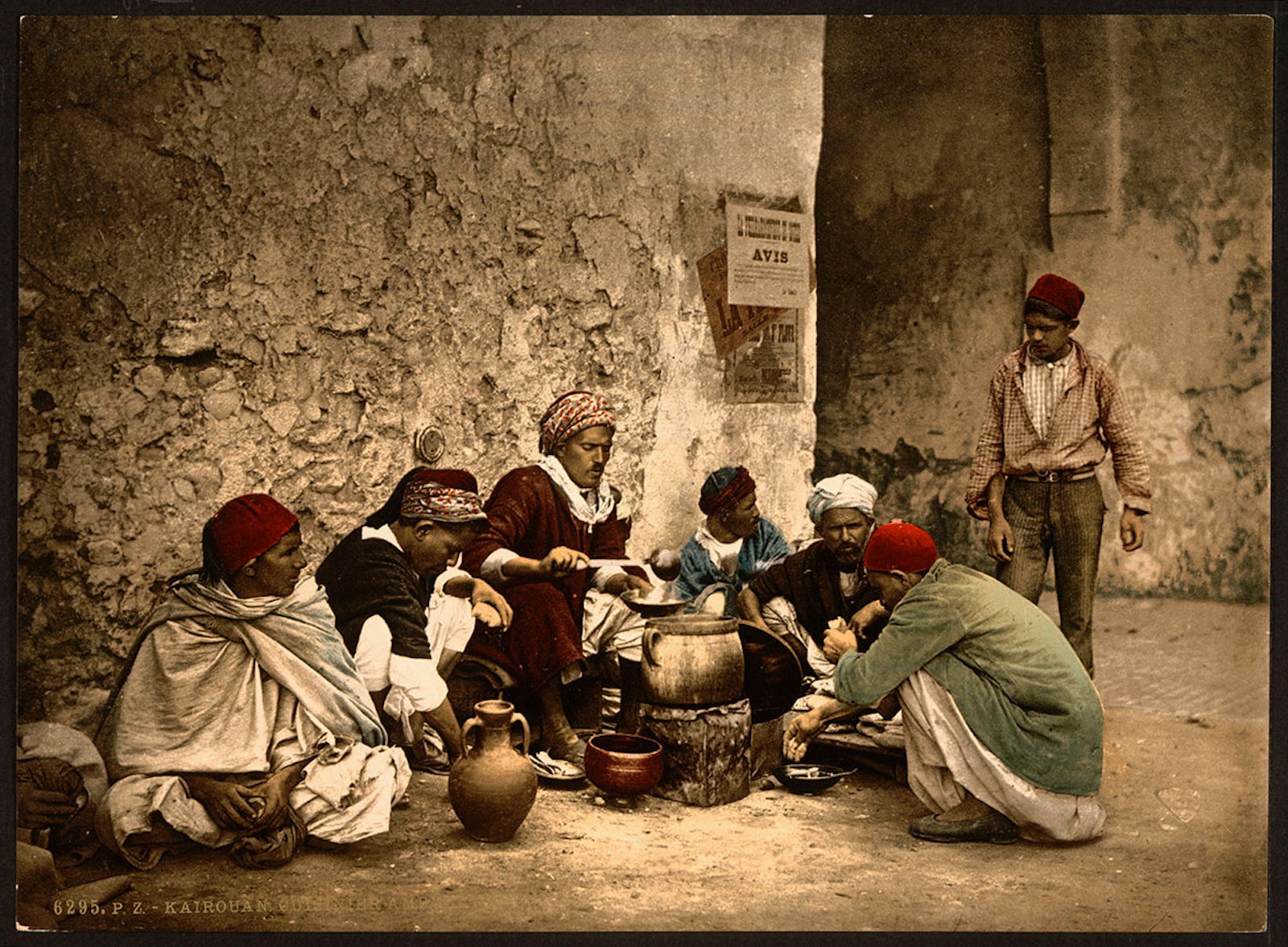I am a passionate and frequent traveler . . . usually. This year has altered so many aspects of our lives and limited the ways that we can experience textiles, culture, and the world. What to do? I have been exploring textile paths that are unfamiliar to me, guided by researchers and makers who have laid the groundwork I am only just discovering. There is always so much to learn, and this is a great opportunity to explore further afield.

Because of their interests in North African textiles and time spent living in the region, Irene Waggener and Richard Stirba set out to create a handknitted chéchia. This cylindrical, brimless hat is common in Tunisia. Photo by Irene Waggener
As usual, I head out to learn about a time or technique I have not explored, only to loop back into the glorious tangle of global textiles. I was excited to learn about the Tunisian chéchia, an iconic red cap, in Richard Stirba’s article in this issue. At the same time, I was reading about cochineal, a red dye used in Aztec textiles since ancient times. Distance in time and geography vanished when I learned that cochineal was used to dye the crimson caps. The insect dye had made its way across oceans and into dyepots in North Africa. Of course it had.
Textile history is brimming with makers stretching to explain and define and improve. Susan Strawn shares the story of Ellen Harding Baker and other nineteenth-century quilters who stitched the night skies into cloth. Cary Karp details the shifting language used to describe and define crochet beginning in the eighteenth century.

A vintage 1854 pattern, featuring slip-stitch crochet, provides the stretchy structure for these charming gloves made by Nancy Nehring. Photo by Matt Graves
By exploring something seemingly new, we add context to what we already know. Wanderlust can help bring us home.
—Kate Larson
Editor, PieceWork
Find these articles, projects, and more in the Winter 2020 issue of PieceWork.

Illustrations of hooks found in nineteenth- and twentieth-century instructions. From top: Figure A. Penélopé (Dutch, 1833); Figure B. Der Bazar (German, 1864); and Figure C. Scottish Home and Country (Scottish, 1959).
Resources for "Evolution in Early Crochet: From Flat-Hook Knitting to Slip-Stitch Crochet" by Cary Karp
- Commissioners of National Education in Ireland. Simple Directions in Needle-Work. Dublin, 1853.
- Grant, Elizabeth. Memoirs of a Highland Lady. London: John Murray, 1898.
- Henshall, Audrey. Early Textiles Found in Scotland. Edinburgh:Society of Antiquaries of Scotland, 1952. Available at www.archaeologydataservice.ac.uk.
- Lambert, Frances. My Crochet Sampler, Second Edition. London:John Murray, 1844. Available at www.archive.org.
- Netto, Johann Friedrich, and Friedrich Leonhard Lehmann. Die Kunst Zu Stricken in ihrem ganzen Umfange [The Art of Knitting in its Entirety]. Leipzig: Voss, 1800. Available at www.staatsbibliothek-berlin.de.
- de la Platière, Roland. Encyclopédie Méthodique, Volume 1. Paris: Panckoucke, 1785. Available at www.books.google.com.
- —. Encyclopédie Méthodique, Volume 6. 1786. Available at www.archive.org.
- Scollay, Louise. “Episode 118 – Hand-making in Archives: Cleekit Gloves.” www.knitbritish.net/ep118.
- Schumaker, Anna. The Columbia Book of Yarns, Ninth Edition. Philadelphia: The Manufacturers of Columbia Yarns, 1908. Available at www.archive.org.
- —. The Columbia Book of Yarns, Sixteenth Edition. Philadelphia:The Manufacturers of Columbia Yarns, 1915. Available at www.archive.org.
- —. The Columbia Book of Yarns, Nineteenth Edition. Philadelphia: The Manufacturers of Columbia Yarns, 1918. Available at www.archive.org.

